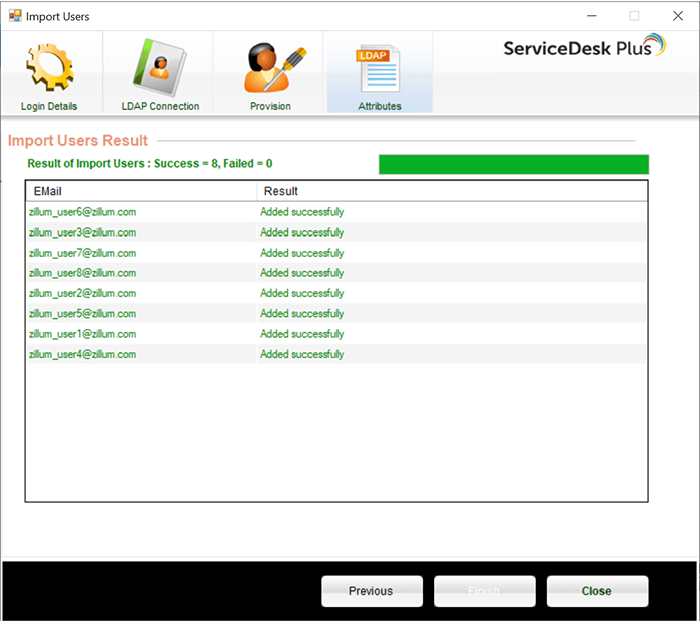The Provisioning App utility can be used to import Requesters into ServiceDesk Plus Cloud from your AD/LDAP. It can also be configured to run as a Scheduled Task in Windows to automatically add, update, disable or delete users from ServiceDesk Plus Cloud on a periodic basis.
User Management in ServiceDesk Plus Cloud is powered by Zoho. So, a Zoho account would be automatically created for each of the imported user.
The following fields can be imported with the Provisioning App: Name, EMail, Phone, Mobile, Site, Department, Manager and Job Title. If you have configured any additional fields for the Requester, they can also be imported, if corresponding values are available in AD/LDAP. Department and Site will be automatically created, if the details are available in LDAP, and if the corresponding Department / Site is not present in ServiceDesk Plus Cloud.
The Provisioning App queries LDAP and gets a list of Users from LDAP.It then gets your organization's Users from Zoho accounts. Users are excluded based on the exclusion rules. The Provisoning App then compares the Users got from LDAP queries and Zoho and handles the following cases:
Since the Provisioning App adds or deletes users from your organization account in ServiceDesk Plus Cloud, it is important that you configure the LDAP queries and exclusion rules correctly in the app. First determine the set of users you want to sync between your LDAP server and ServiceDesk Plus Cloud/Zoho. Configure LDAP queries in the Provisioning App tool so as to match only those users whom you want to import or sync. Here are a few examples:
1. To import /sync all users in your AD/LDAP, use the following:
Base DN : DC=zillum,DC=com Query : (objectClass=user)
2. To import or sync all users in an Organization Unit (OU) named Texas, use the following:
Base DN : OU=Texas,DC=zillum,DC=com Query : (objectClass=user)
3. To import or sync only the users in a specific ( example, “ITAdmin” ) department and belonging to Texas OU,use the following:
Base DN : OU=Texas,DC=zillum,DC=com Query : (&(objectClass=user)(department=ITAdmin))
Manual sync
You can manually run the Provisioning App tool and select the sync option. It will show you the list of users to be added or deleted/disabled. You can select the users and sync them.
Command-line sync
Before you start command-line sync, you must do the following:
Execute the following command to initiate the sync process:
ProvisioningApp.exe --action=sync --conf=C:\Users\Administrator\ZohoProvisioning\provisioning.conf --mailto=john@zillum.com
Scheduled sync
You can configure the above command in the Windows Task Scheduler for periodic sync'ing. An email wouldl be sent to the given address whenever new users are added or users are deleted/disabled. Emails would not be sent for any update to user details like Department or Site, etc., You can see the system log anytime in Admin page of ServiceDesk Plus Cloud console for details about requester add, update or delete.
For more details about configuring scheduled sync, please refer here.
Single Forest
You can use a Global Catalogue to query multiple domains in a single forest. Instead of "LDAP://", you can give "GC://" in the Provisioning tool. This way you can search the Global Catalog and do an import or sync of all the users in same forest with ServiceDesk Plus Cloud.
Multiple Forests
You need to run the Provisioning tool multiple times to import users from multiple forests. There is no option to sync users from multiple forests.
If you face any problem during import or sync, please send us the log files. The log files will be generated in Windows User Profiles directory. e.g., C:\Users\Administrator.Domain\ZohoProvisioning\logs
1. Provide the Verified domain name and click Authorize.

2. Click the link in Step 2 to open it in your browser.
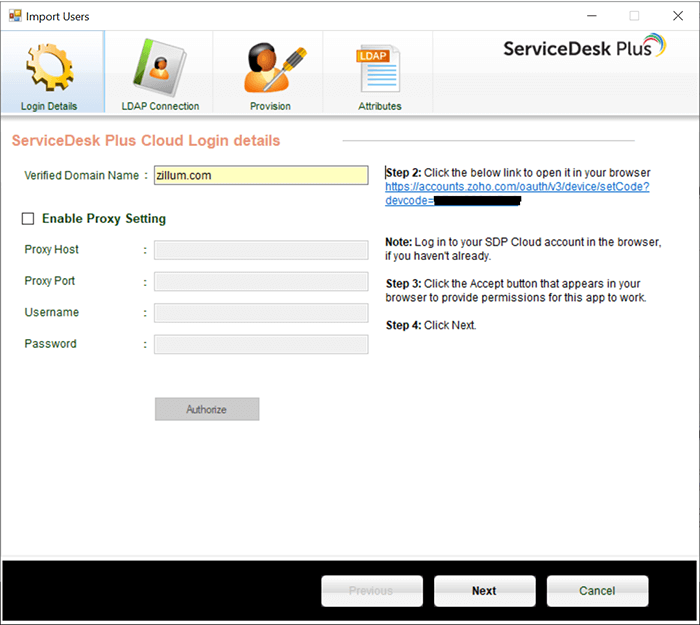
3. Log in to your SDP Cloud account and click Accept button to provide permission for this app to work.
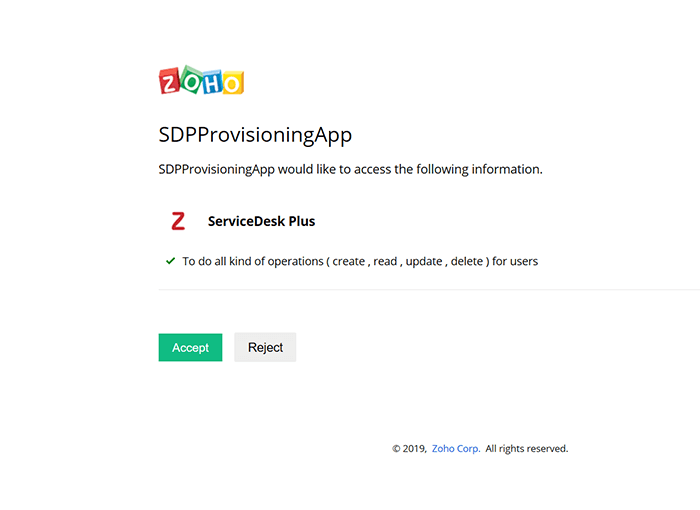
4. Provide the LDAP Connection details
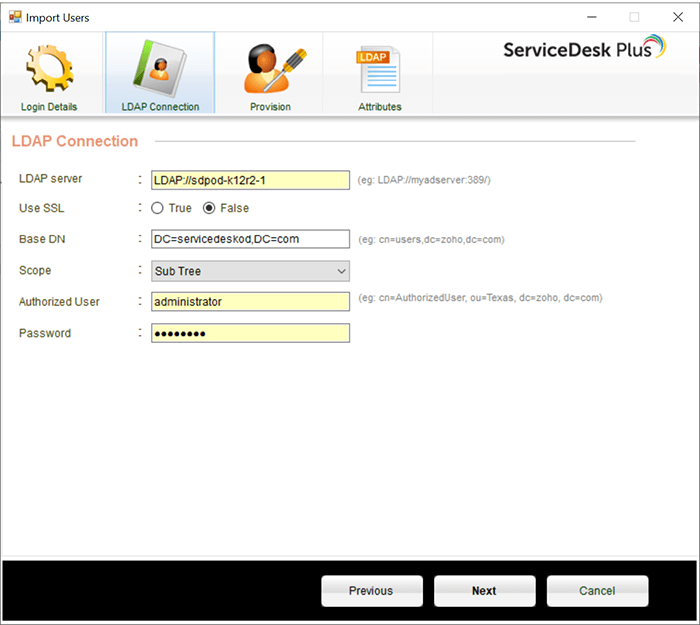
5. Choose the operation and provide LDAP Queries and Exclusions as needed
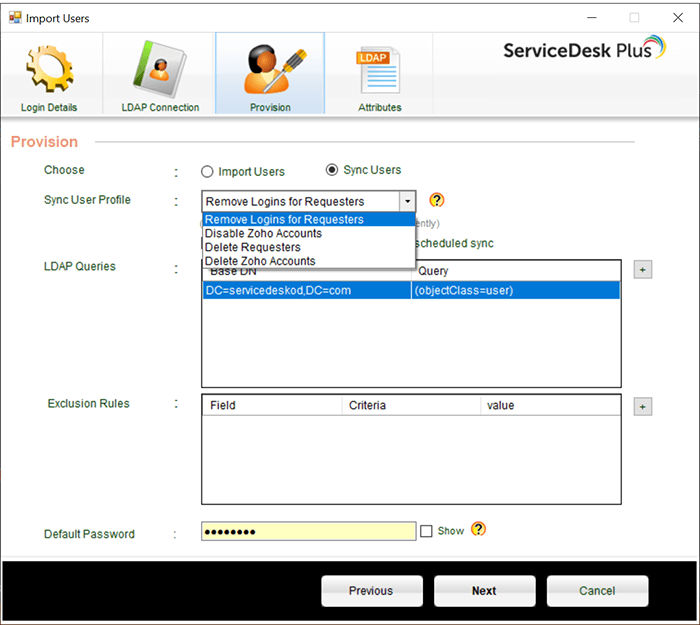
*Service Desk Instance - Even if you have multiple Service Desk Instances in the ESM Directory, the tool performs actions on the Service Desk Instance that is marked as "Default" by the Technician using the tool.
6. Provide the necessary attributes

7. Review the LDAP Query Results and click 'Finish'
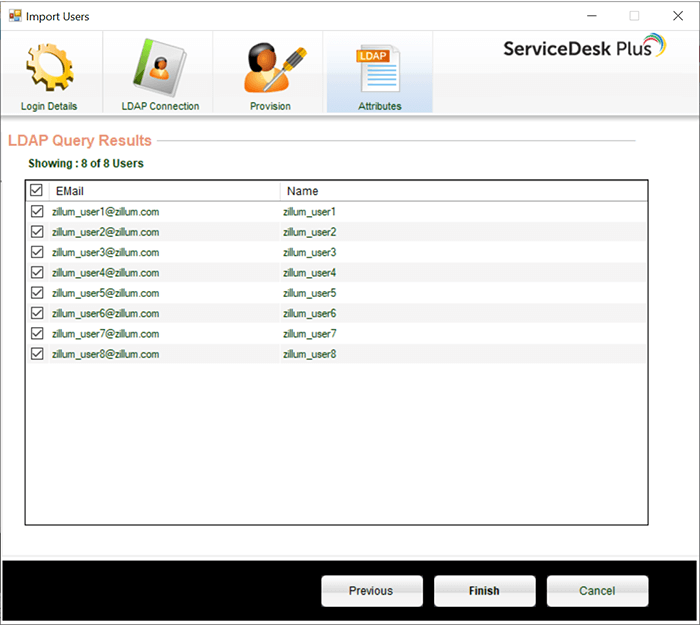
8. The list of users imported is displayed
